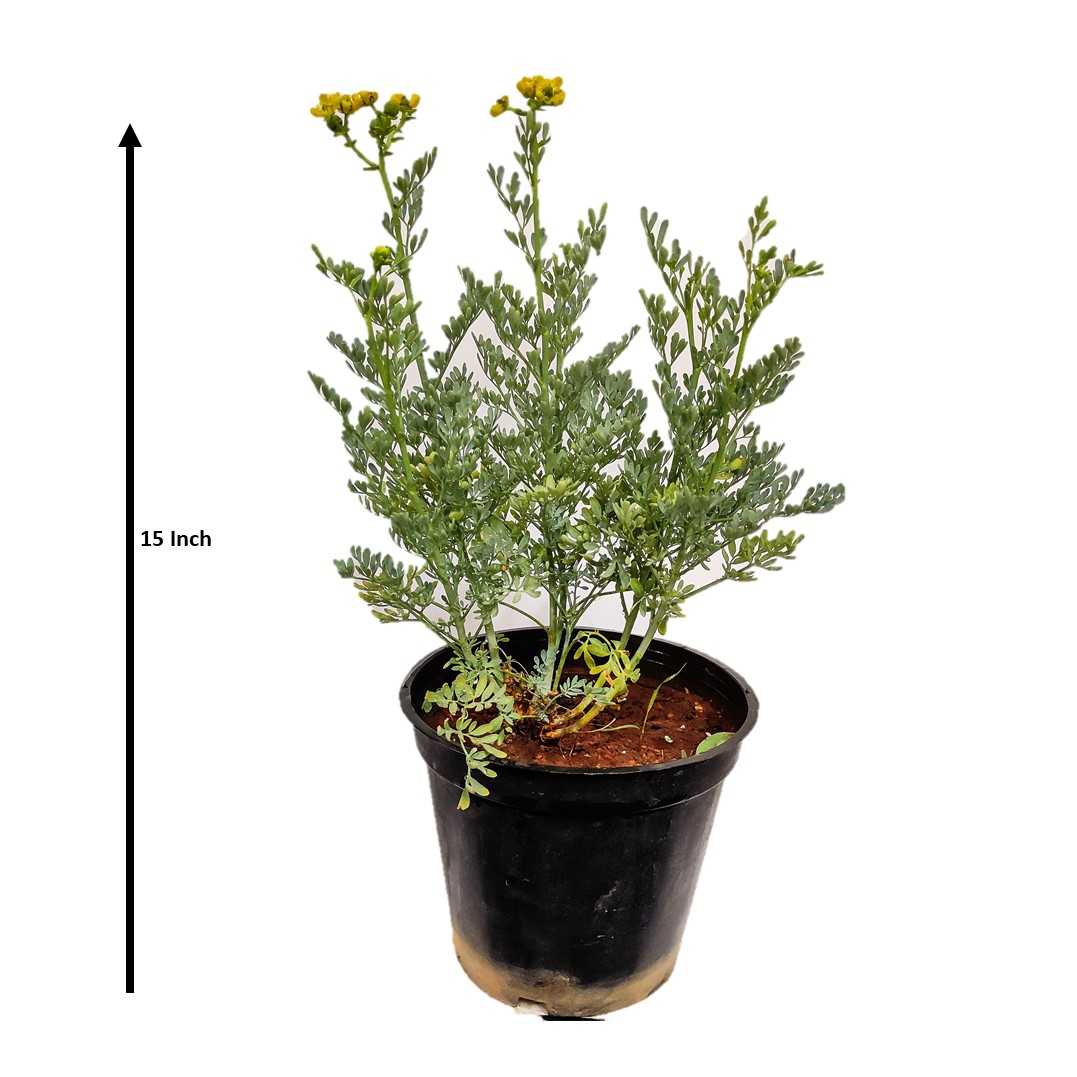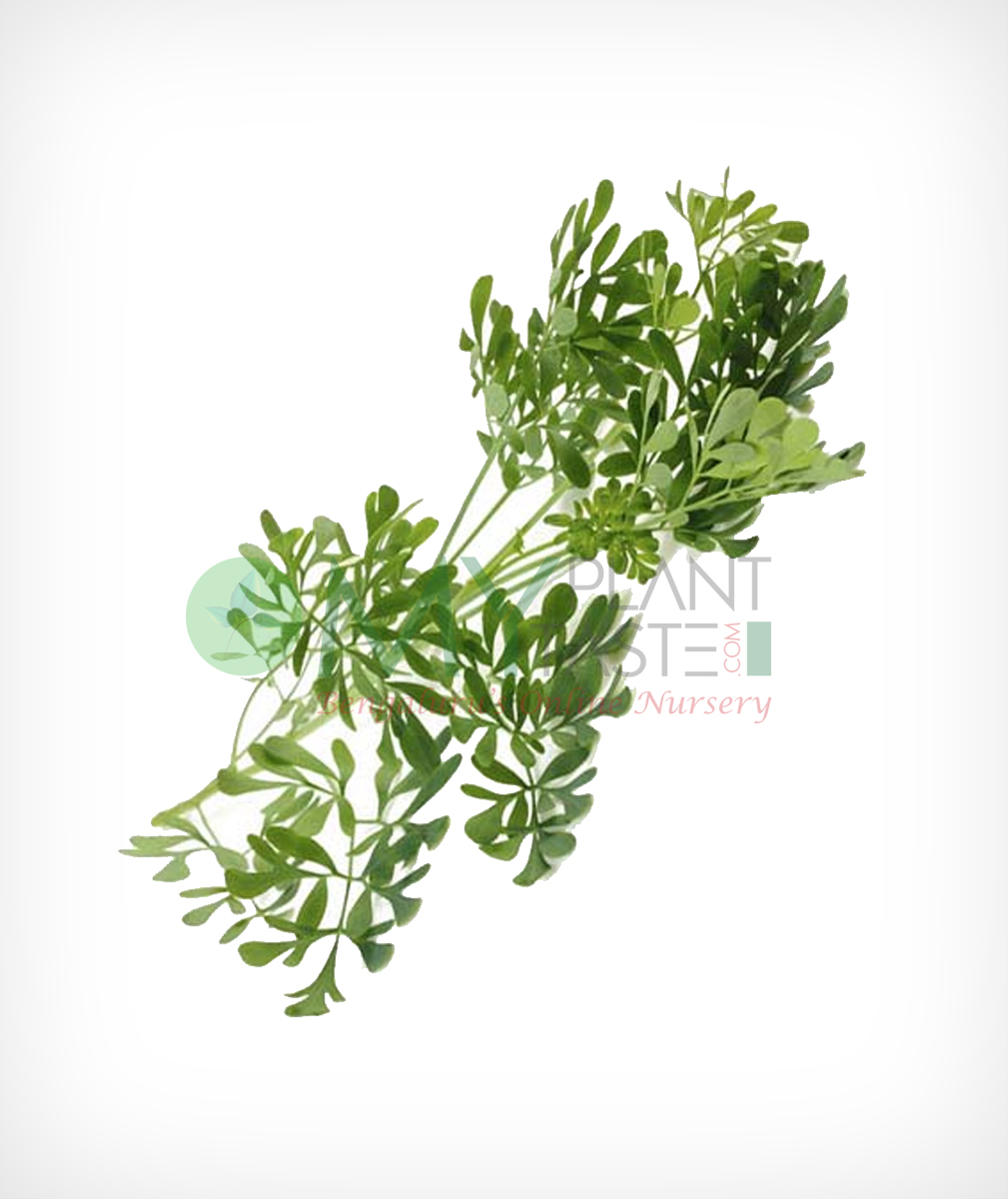
₹149.00
Add to cartNagadali / Rue / Ruta graveolens
₹149.00
Ruta graveolens commonly known as rue, common rue or herb-of-grace, is a species of Ruta grown as an ornamental plant and herb. It is native to the Balkan Peninsula. It is now grown throughout the world in gardens, especially for its bluish leaves, and sometimes for its tolerance of hot and dry soil conditions. It is also cultivated as a medicinal herb, as a condiment, and to a lesser extent as an insect repellent.
11 in stock
 Maya / Pre-sale Questions
Need Help? Contact Us via WhatsApp
Maya / Pre-sale Questions
Need Help? Contact Us via WhatsApp
DISCLAIMER Please Bear in Mind That Plant Image May Slightly Different From Actual Plant in Terms of Color Due to the Lighting During Photo Shooting or the Monitor's Display
Rue has a culinary use, but since it is bitter and gastric discomfort may be experienced by some individuals, it is used sparingly. Although used more extensively in former times, it is not a herb that is typically found in modern cuisine. Today it is largely unknown to the general public and most chefs, and unavailable in grocery stores. It is a component of berbere, the characteristic Ethiopian spice mixture, and as such is encountered in Ethiopian cuisine. Also in Ethiopia, fresh rue is dipped in coffee before drinking it.
It was used extensively in ancient Near Eastern and Roman cuisine (according to Ibn Sayyar al-Warraq and Apicius).
Rue is used as a traditional flavouring in Greece and other Mediterranean countries.
In Istria (a region in Croatia), and in Northern Italy, it is used to give a special flavour to grappa/raki and most of the time a little branch of the plant can be found in the bottle. This is called grappa alla ruta.
Seeds can be used for porridge.
The bitter leaf can be added to eggs, cheese, fish, or mixed with damson plums and wine to produce a meat sauce.
In Italy in Friuli Venezia-Giulia, the young branches of the plant are dipped in a batter, deep-fried in oil, and consumed with salt or sugar. They are also used on their own to aromatise a specific type of omelette.
Used in Old World beers as flavouring ingredient.
1 review for Nagadali / Rue / Ruta graveolens
Only logged in customers who have purchased this product may leave a review.
Shipping Details
- Please pay more attention to your order address which MUST MATCH your shipping address. (If you’re from Bangalore, Please leave your full name with alternate mobile no. It is very important)
- Items will be shipped within 6-7 business days after payment.
- Please check items when delivered, if damaged, please kindly accept it and contact us immediately. We will make a confirmation and resend you a new one.
| Shipping By | Shipping Cost | Estimated Delivery Time | Tracking Information |
| MPMT | Free Shipping above 1000 Rs | 6-7 days Standard Estimate Time for Plants | Available Click Here |
Related products
(Approx 700g)
Fiddle Leaf Fig / Ficus Lyrata
Rated 5.00 out of 5
1
(Approx 700g)
Baby Rubber Plant Variegated/ Peperomia Obtusifolia Variegata
Rated 5.00 out of 5
1





























N UDAYASIMHA (verified owner) –
One plant is bit dried.Pots were also dry.